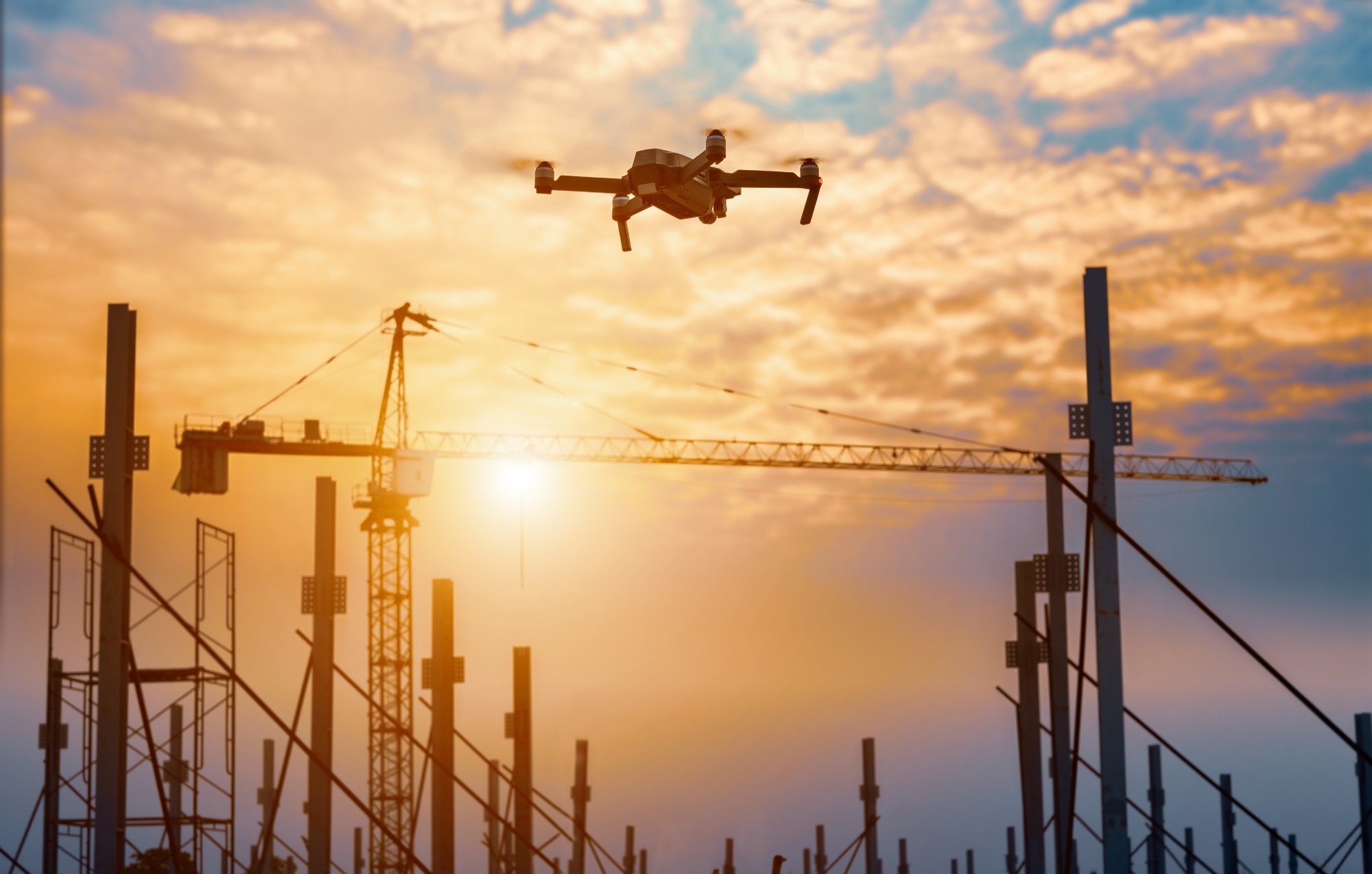A new scientific review lays out the current state and future direction of aerial additive manufacturing (AM), a construction method that uses drones to build structures in mid-air.
 Study: Aerial additive manufacturing: Toward on-site building construction with aerial robots. Image Credit: Casezy idea/Shutterstock.com
Study: Aerial additive manufacturing: Toward on-site building construction with aerial robots. Image Credit: Casezy idea/Shutterstock.com
While still in its early stages, the technology promises to extend construction into environments that are currently inaccessible, such as disaster zones, rugged terrain, and even planetary surfaces. The study also proposes a structured autonomy framework to tackle the major hurdles preventing drones from becoming fully capable, self-directed builders.
Background
Advancements in large-scale additive manufacturing are reshaping the construction landscape, offering improvements in productivity, sustainability, and safety compared to traditional building techniques. Aerial AM, where drones handle construction tasks in the open air, adds another layer of potential by enabling access to difficult locations, vertical scalability, and rapid, on-demand repairs.
But while the idea sounds futuristic, its real-world application is still limited. Most construction robots today, like robotic arms or gantry-based 3D printers, are ground-bound and struggle in uneven terrain or at great heights. This is where aerial systems have a clear advantage.
Researchers from the Laboratory of Sustainability Robotics at Empa (Swiss Federal Laboratories for Materials Science and Technology) and EPFL (École Polytechnique Fédérale de Lausanne) are actively exploring how drones could one day function as autonomous builders. Their review maps out what’s been achieved so far and what it’ll take to make airborne construction a practical reality.
Flying Where Machines Can’t
Drones can go places traditional equipment simply can’t - rooftops, mountainsides, disaster zones, and potentially other planets. They don’t need a fixed setup or base and can work in swarms for added flexibility. This opens the door to faster deployment, shorter material transport routes, and safer construction sites overall.
In emergency situations, for example, drones could autonomously deliver materials and build temporary shelters in flooded or damaged areas. For everyday maintenance, they could inspect and patch up cracks on high-rise facades or bridges - no scaffolding required.
Although we’re still a ways from commercial deployment, early-stage prototypes have already demonstrated impressive capabilities, like cable-tensioned structures, modular assembly, and 3D printing via drone. The key is turning these lab experiments into something reliable and scalable.
What’s Holding it Back?
The potential is huge, but so are the hurdles. One of the biggest is that aerial AM sits at the intersection of three demanding fields: robotics, materials science, and architecture. Making progress in one without the other just doesn’t cut it.
Take materials: a drone might be able to fly with precision, but if it doesn’t have the right kind of lightweight, printable material, it’s not going to build anything useful. Likewise, if building designs don’t account for the limited accuracy of drone placement, structural integrity is at risk. On the robotics side, things like payload limits, battery life, and autonomy are major bottlenecks.
To navigate these challenges, the authors propose a five-stage autonomy framework. It ranges from basic flight-path following to full autonomy, where drones could scan the site, detect issues, and adapt construction plans on the fly. The long-term goal is for the drones to be able to understand their environment and materials well enough to make real-time decisions during a build.
For now, the best approach might be hybrid systems. Drones consume significantly more energy, 8 to 10 times more than ground robots, and can’t yet handle large build volumes. So a logical use case is having ground-based robots do the lower sections of a structure, with drones taking over at height where ground machines fall short.
Enter Empa’s DroneHub
Empa’s new DroneHub is a big step toward bringing all of this from theory to practice. Located in their innovation-focused research facility, the DroneHub is a real-world testbed designed to bridge lab research and industrial application. It allows researchers to test drones in outdoor, realistic conditions - something that’s been missing until now.
This testbed also supports a new professorship in Sustainability Robotics between Empa and EPFL and plays a key role in a broader collaboration with Imperial College London. Field trials are already planned for this year, marking an exciting shift from conceptual research to live testing.
Journal Reference
Kaya, Y. F., Orr, L., Kocer, B. B., Pawar, V., Stuart-Smith, R., & Kovač, M. (2025). Aerial additive manufacturing: Toward on-site building construction with aerial robots. Science Robotics, 10(101). DOI: 10.1126/scirobotics.ado6251, https://www.science.org/doi/10.1126/scirobotics.ado6251
Disclaimer: The views expressed here are those of the author expressed in their private capacity and do not necessarily represent the views of AZoM.com Limited T/A AZoNetwork the owner and operator of this website. This disclaimer forms part of the Terms and conditions of use of this website.